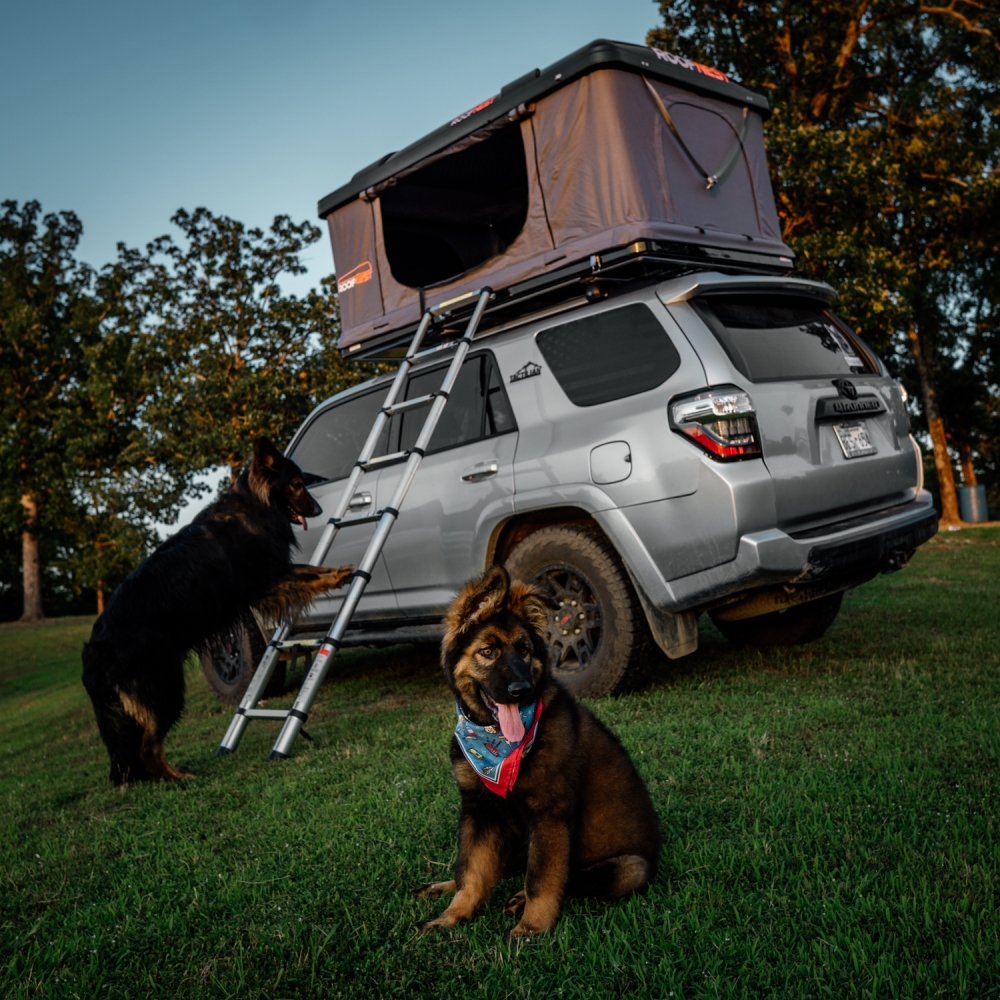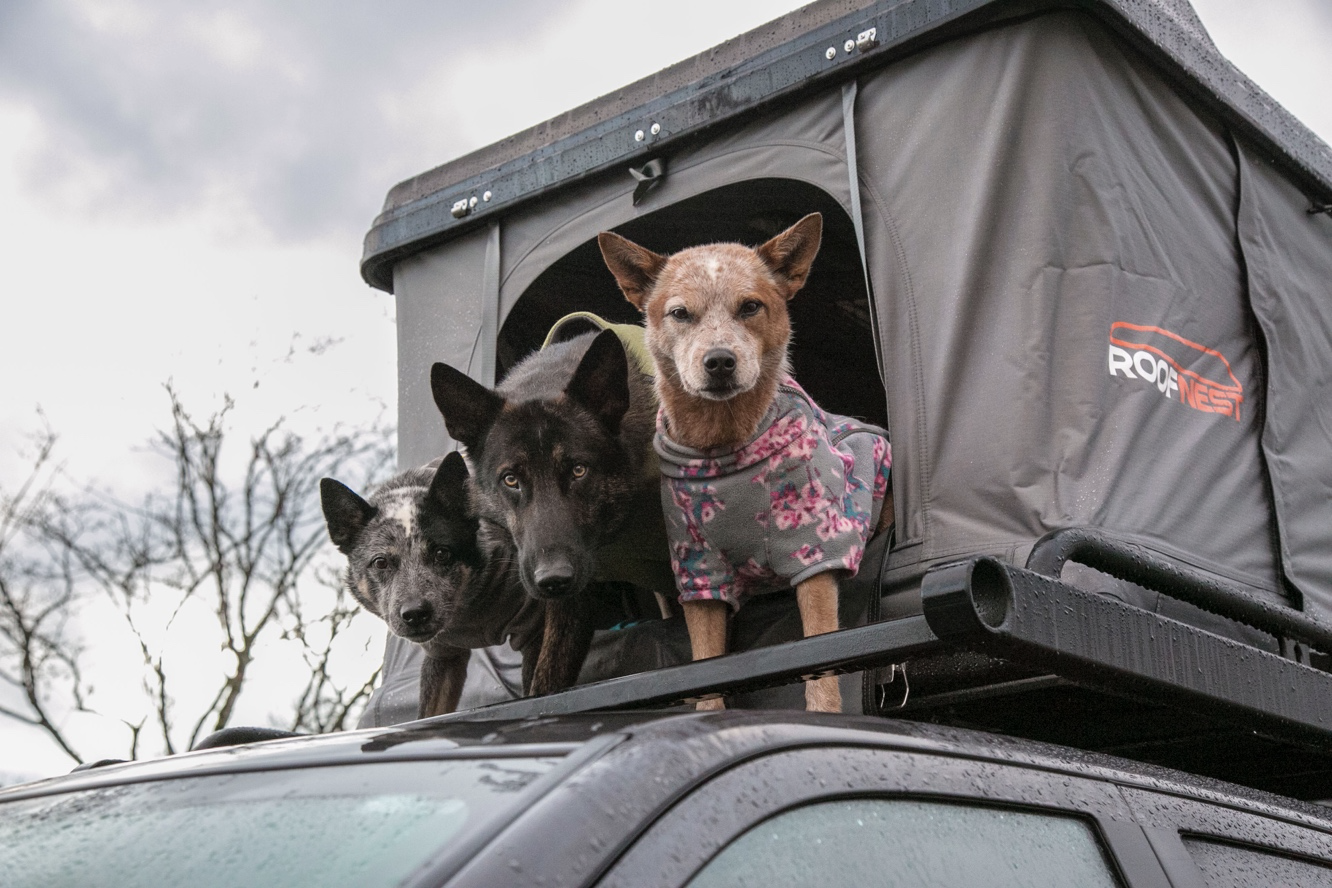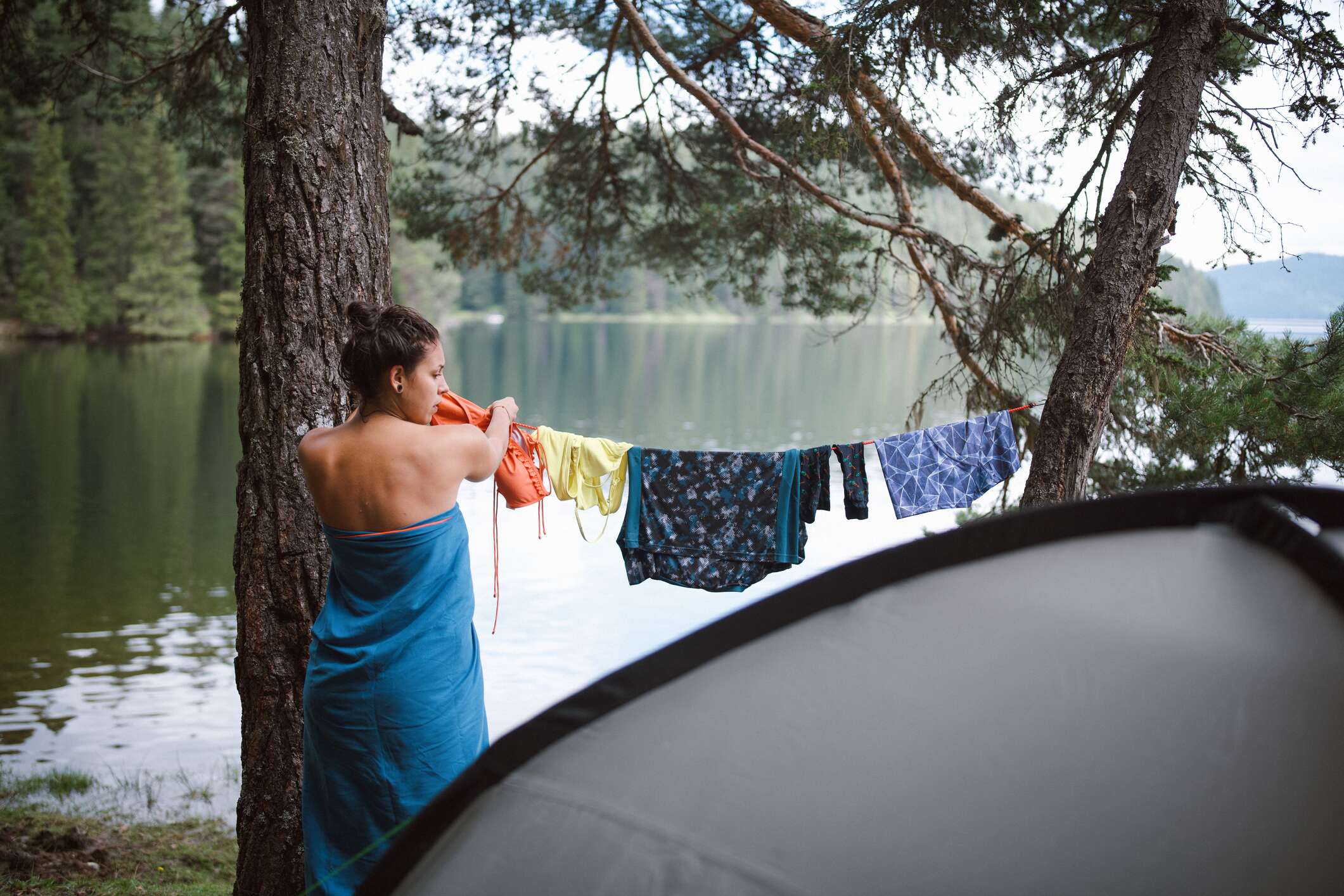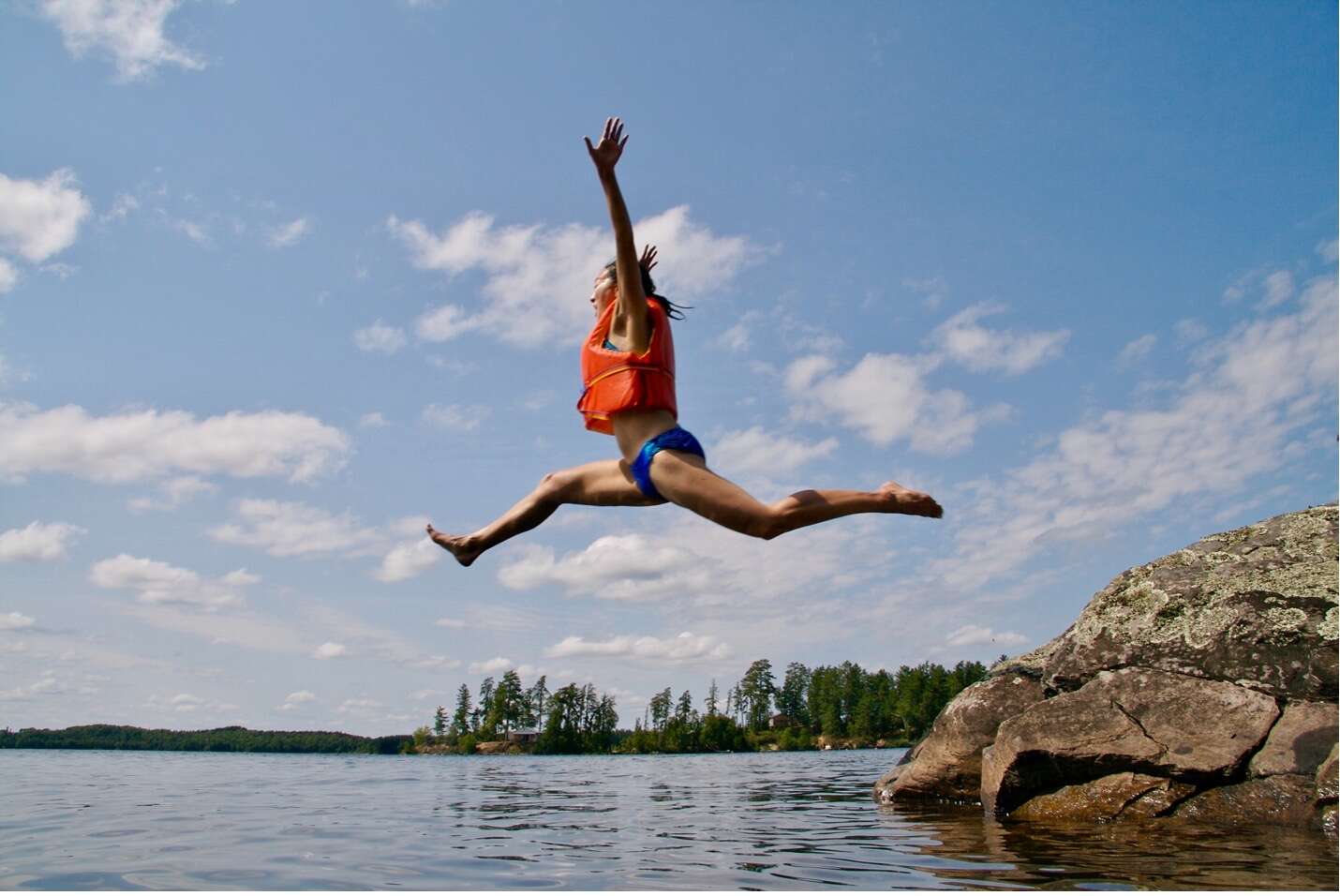in Camping / by
As the country starts to open back up little by little, one of the things we’re most excited about is planning our summer camping trips.
Public camping grounds and state and national parks are slowly allowing people back in to camp. If you follow the rules, avoid crowded areas, and know how to camp safely during coronavirus, there’s no reason you can’t start dreaming up your next adventure today.
And it’s not just humans who are feeling cooped up these days. Our dogs are feeling the urge to get out and explore, too!
There’s no doubt your canine companion is looking forward to going for long hikes, playing at the dog park, and weekend trips to the mountains.
But have you ever tried to take your dog on a camping trip and kind of regretted it? All the Instagram posts featuring campfires and adorable Australian Shepherds make it look easy. But some dogs don’t fare as well as others when it comes to camping.
Maybe your dog likes to chase squirrels or other wild life, putting themselves at risk of getting lost. Or maybe they’re prone to bark at night, keeping you and other campers around you awake for hours.
If this sounds like your experience camping with your dog, don’t worry — it doesn’t mean your dog will never be a camper. And if it’s your first time camping with your dog, you can get them off on the right foot (or paw) with a few easy camping tips.
Where Can You Camp With Your Dog?
Here in Colorado, there are seemingly endless amazing places to camp with dogs — from Glacier Basin in Estes Park to Bear Lake in the San Isabel National Forest.
Across the country, you’ll find many National Parks and State Parks that have certain areas that allow you to camp with a dog. But the rules are different everywhere, so it’s important to check in advance.
The National Parks Service website has a great map for finding dog-friendly campsites, which you can check out here >
Keep in mind, your dog may be allowed in some camping areas and trails, but not in others. Keep an eye out for signs, and ask an official if you’re not sure where your dog is and isn’t allowed.
Your dog may find a bit more freedom in National Forests and on BLM land, which are generally less sparsely trafficked and have looser restrictions regarding pets. But again, check the website or call local officials to double-check if you aren’t sure.
You can also search for dog-friendly campgrounds on the “Campgrounds” section of BringFido.com.
View this post on Instagram
Find the perfect campsite for you and your furry friends with Roofnest. 📸: @gondirtin
Tips for Camping with Your Dog
Now that you know how to find a dog-friendly campsite, here are some tips and tricks to make camping with your dog go as smoothly as possible.
1. Bring Lots of Water
If you’re not camping in a developed campsite, you won’t have access to drinkable water. Most of us remember to bring enough water for ourselves, but you might overlook your dog’s thirst.
Whatever amount of water you normally bring for yourself, double it to make sure you have enough for your dog, too.
A collapsible dog bowl that clips onto a backpack is a great help with keeping your dog hydrated, by the way. They also make leak-proof dog bowl water bottles that are handy for going on hikes or spending a day in the sun.
View this post on Instagram
2. Always Keep Your Dog on a Leash
Many campgrounds require you to keep your dog on a leash or lead. Even if it’s not a rule, there’s good reason to do so anyway.
For starters, your dog could run into someone else’s campground and bother other campers. And if your dog runs off, they could encounter a wild animal that won’t be as cuddly as they are. They could also get lost, or go missing.
Plus, letting your dog run rampant doesn’t exactly fall in line with the “leave no trace” mentality.
Ideally, you’ve trained your dog to follow basic commands before you take them on a camping trip. That way you can keep them nearby if they get off their leash, or if you want to let them run around a bit on a designated off-leash trail.
If your dog isn’t good about following commands, they might not be ready for a camping trip.
Pro-tip: Put a reflective collar on your dog in case they run off in the dark. Add a sticker on their tag with your campsite number or location in case someone else finds them.
View this post on Instagram
3. Keep Them Protected from the Elements
We think it’s pretty cool to go cold weather camping. But camping in winter might be a bit too cool for your dog…as in, they might get cold!
Arm your pooch with a doggie jacket and/or dog sleeping bag to help them stay warm on cold nights. Try out booties or Musher’s Secret paw wax to protect their paws from snow and ice.
On the flip side, for outings in the hot desert, you can get heat-resistant booties to protect your dog’s paws from searing hot sand and rock. You can also equip them with a cooling vest that you soak in water to keep them from overheating on hot days.
View this post on Instagram
4. Bring a Big Tent
If you let your dog sleep in your bed, you know that even seemingly small dog can take up a lot of space when they stretch out. In a tent, sleeping space can run out fast.
Make sure you bring along a spacious tent, like the XL versions of our Falcon, Condor, and Sparrow roof top tents. With more space for humans and canines, what’s not to love?
If your dog has never spent the night in a roof top tent before, we’d recommend a trial run at home to make sure they don’t get too anxious when you’re out in the wild.
Help them get up the ladder (some treats might help), then get up in the tent with them and lay down. Bring their favorite toy into the tent to help make it feel like their home away from home. If they seem relaxed, they’re ready for a night in a roof top tent!
View this post on Instagram
5. Bring Toys to Calm Them
Your dog might get stressed on a camping trip, especially if they’re new to the experience. Be sure to pack a few toys to help calm them. This also gives them something to play with if they get bored.
6. Pack A Pet First Aid Kit
A campsite out in the mountains might be far away from a vet. Be prepared for some minor pet injuries (and human ones too) by always packing a first aid kit.
A few things you’ll want to pack:
- Liquid bandages for cuts
- Iodine for cleaning cuts and small wounds
- Tick remover
- Benadryl in case they get stung by a bee (a 25 mg tablet is perfect for a 25 pound dog, 1 mg per pound — you can break it up for smaller dogs, or get children’s Benadryl)

7. Make Sure They Have Their Shots
Dogs can pick up all kinds of infections in the wild. They can get bit by fleas which can give your dog a tapeworm, or ticks which can infect your dog with Lyme disease. And mosquito bites can give your dog heartworms.
Make sure your dog has all the right preventive medication and vaccines to protect them from any infections they may pick up on your camp trip.
Standing water is another risk, since it can be full of bacteria and cause leptospirosis. There is a vaccine for this, so if you think your dog might get into a lake, creek, or puddle and drink up, you’ll want to ask your vet about those shots.
If you’re not sure what medications or vaccines your dog needs to stay safe while camping, consult with your veterinarian.
8. Keep Them Clean
There’s little worse than a muddy dog making a mess in your tent. Bring towels to dry off your dog before they get in, and grooming wipes to clean off their feet and dander.
A brush can also help get rid of shedding hair and any stickers they pick up in the bush.
Our camping awnings and annexes are perfect for providing a place to dry and clean your dog before letting them into your roof top tent.
9. Leave No Trace
It’s every camper’s responsibility to protect the wild places we all enjoy so much. When it comes to your dog, this means you need to do these 3 things:
- Don’t let them bark too much: This will disturb the natural routines of local wildlife.
- Pick up their poop: Dog droppings are not a natural part of any wild place. Let’s keep it that way.
- Keep your dog on a leash: A freely roaming dog can scare off wildlife and crush fragile plants.
View this post on Instagram
Your Dog Camping Checklist: Things to Bring
- Lots of water
- Collapsible bowl or dog bowl water bottle
- Brush to get out stickers and remove shedding hair before they enter your tent
- Towels to dry and clean
- Grooming wipes
- Toys
- Bags to pack out doggie poop
- Paw protection for snow and ice or hot sand and rock
- Jacket and/or doggie sleeping bag for cold weather camping
- Pet first aid kit
Keep Exploring with Roofnest
A dog is a great way to make camping more fun, but there are a lot of other ways to level up your camping game, too.
From portable camping toilets and Nalgene sleeping bag warmers to gourmet campfire cooking and more, our blog is filled with insider tips for camping connoisseurs.
Check out more blogs on camping tips, tricks, and hacks >
You might also like

5 Best Ways to Get Your Dog Into Your Roof Top Tent
It’s a conundrum as old as time: How to safely and elegantly get your dog up into your Roofnest. Well, […]

The Best Ways to Clean Your Clothes While Camping
Laundry is a chore pretty much nobody enjoys. And that chore can get a little more annoying during a long […]

The Smartest Ways to Stay Cool While Camping
Author: Nick Jaynes Lying in bed at night during the cold winter months, it’s soothing to think about warm summer […]
